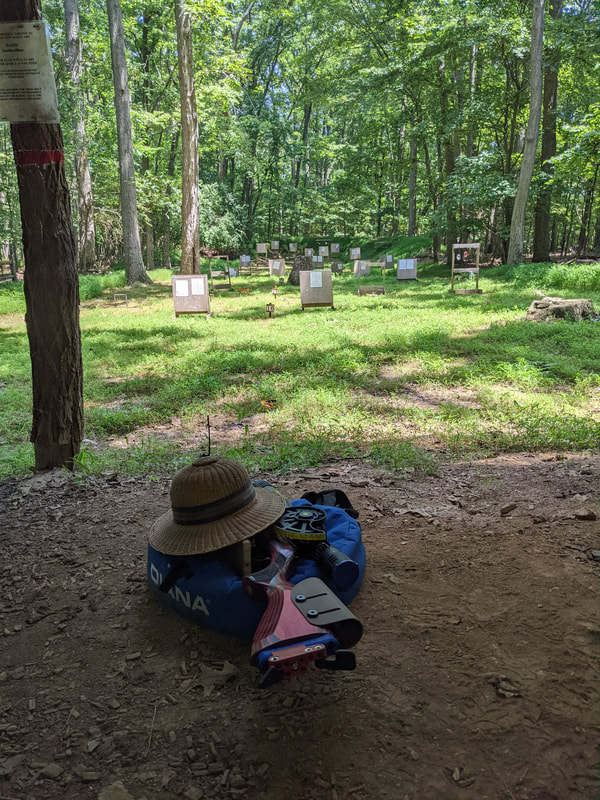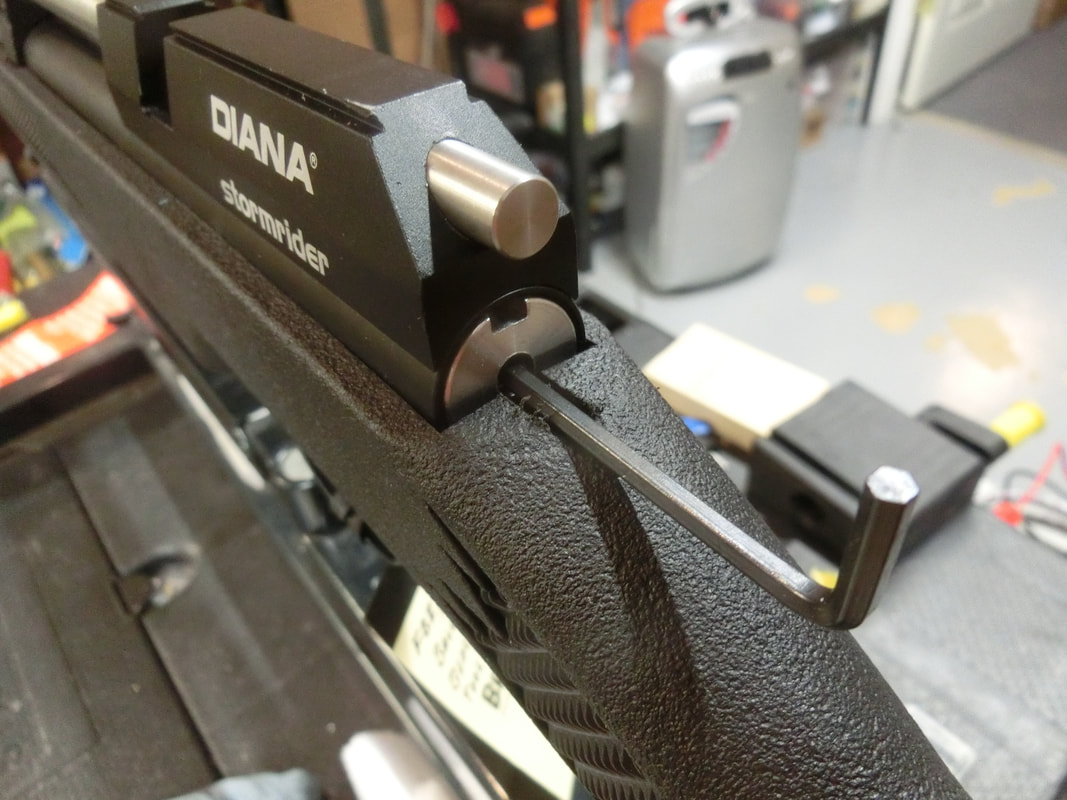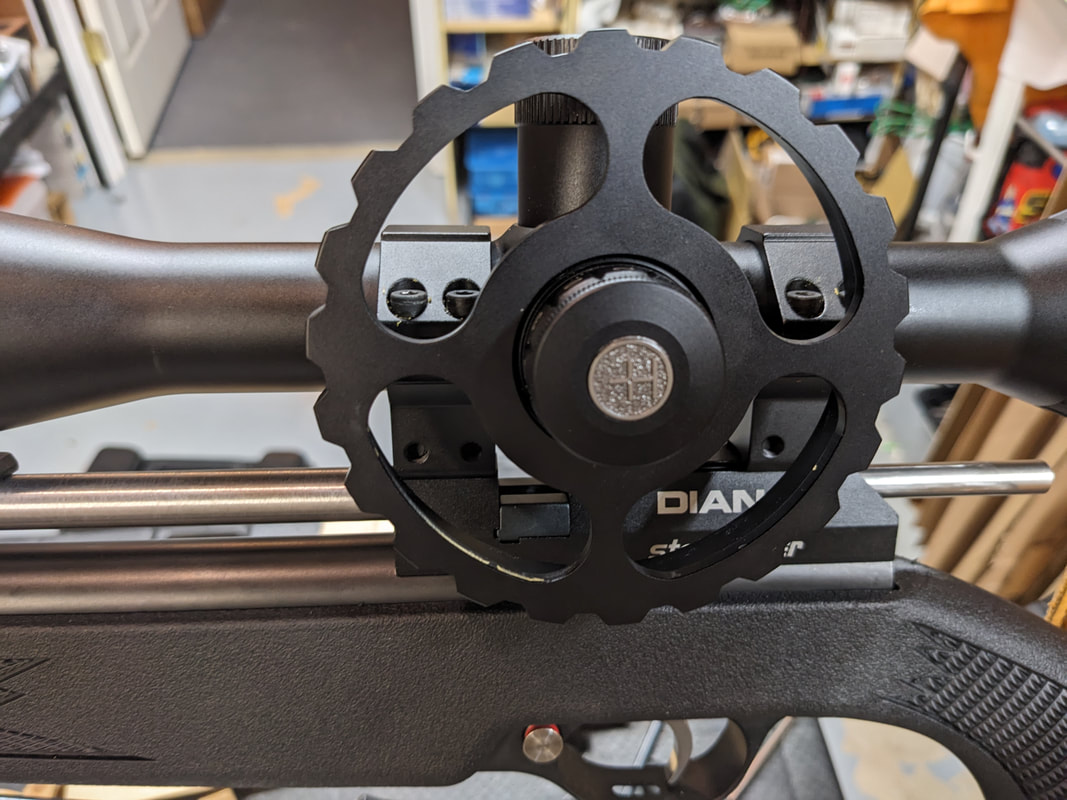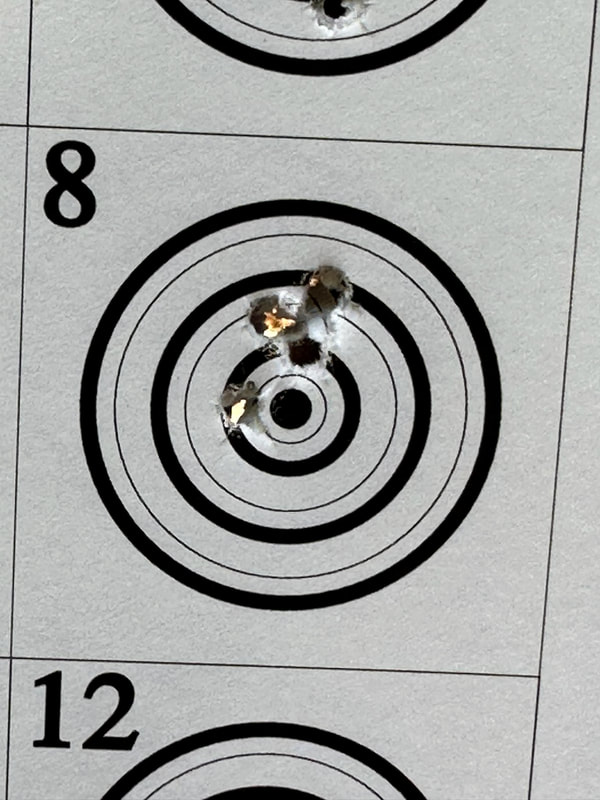It all started with Izaak Walton-Wildlife Achievement Chapter (WAC)/DIFTA
You could argue that DIFTA's FT range is the OLDEST FT range in CONTINUOUS use. Per the Club's recorded history, the first formal FT Match was held there in March 1998.
Since then, the location has not changed in over 25 years.
Sure improvements have been made! there is a dedicated, covered, 55 yards airgun range with a Lexan roof.
Targets have also changed over the years, though we do like our "heritage" targets; some of them extremely challenging, like "Long Tom" who at 30 something yards may not seem too challenging, except when you get up close and personal and see that it is a 7/8" KZ up in the head of the turkey that stands relatively tall off the ground.
So, shoots at DIFTA are always a hoot, even when the MD decides to put too many 3/8" KZ's @ 15 yards, or sets up a 1/2" KZ at 42 yards.... LOL!
WAC has other shooting disciplines at which the members excel, WAC took a World Championship in a shotgun trap event recently, and the 3P airgun Junior shooters usually do very well in both classes (Sporter and Match).
So, it was logical to have some "loaner" rifles for the Junior shooters to try FT.
Mark Mayer worked very hard with the BOD's to get the project approved and once approved we started discussing the project.
The idea was to make TWO rifles that would be suitable for small framed shooters, like Jr's or ladies, or, in general, small framed persons.
Analyzing what was available in the market, we discarded the Crosman Challenger and the S200 on price grounds, we also discarded the Daisy 599 on weight grounds, and we discarded the Beeman chief on trigger quality grounds. Bigger guns were out of the question, so the Gauntlet, the Marauder, the Origin, and others of the size were simply written off from this RFI.
So, what was left was the DIANA Stormrider.
It was the least expensive one, and it was also the one that was best known / researched / documented; the one for which there was a reliable, high quality, regulator available (not the DIANA one), and where we could fairly easily swap the barrel for a Lothar Walther FT Match barrel.
There was ONE aspect where there was a "hole" in the project; and that was an externally adjustable power screw that was "elegant" and still allowed using the rifle as a rifle (as opposed to the "Army BB gun").
After all components had been ordered, & as they started to arrive, I was lucky enough that the FBI & DEA decided to commission their "Ballistic Gel blocks validation tools" , which allowed me the time and the resources to design and implement a proper power adjustment device that was completely internal to the rifle AND would allow a Free-Flight Hammer to increase the efficiency. Sorely needed when you want to shoot long matches with a 100 cc's air tube.
Why?
Because I assumed that the Jr's coming from the "Match" world and accustomed to 5.5 ft-lbs, would regard the 12 ft-lbs limit as more than enough.
BUT
Mark pointed out, that starting with 12 ft-lbs was a bit challenging as far as ranging and wind drift were concerned. So the first design that had served VERY well for the "BB guns" had to be adapted for the AAFTA limit (20 ft-lbs). Now, given the objective of an "entry level" FT gun, the real limit was a medium weight pellet at around 800 and something fps, something in the region of 14 > 16ft-lbs
Furthermore, for FT use, we faced two important "challenges" :
On one hand was the need to use a bigger aiming device and the location of the selected scopes:
There are two basic "free positions" in FT.
Those that shoot "AFFTA-Hunter" and "Open", shoot from a "virtual steady-rest", where the bucket/seat and the bipod OR the Price Harness turns the shooter itself into a solid rest. This allows the shooters to keep a somewhat vertical torso position, and the head goes INTO the scope, needing a forward mounting position. While shooting from the seating position, most shooters go back and therefore can adjust for a more rearwards mounting scope position.
In the end, we decided on offset mounts, which had to be milled off to allow the Hawke scope to achieve a vertical position in the mounts.
The short eye relief, and the location of the erector spring housing are, for me, a definite cause to NOT use Hawke scopes in these projects.
The single shot tray is open on both sides, but it is a definite success of one's dexterity to be able to load the pellet from the right. AND in FT there is a time restriction, so, fumbling pellets is the last thing you want beginners to do.
Use of a conventional single shot shuttle would also suffer from the same inconvenience. Since the Stormrider's bolt rides low and in front on the right side, the magazine is designed to enter and exit from the left side. Same for the conventional single shot shuttle.
In here, our good friend at CARM came to the rescue and designed a lockable single shot shuttle that operates from the right, thereby making it possible to use the large sidewheels that allow being competitive in FT.
Apart from that, the repeatability/uniformity was very good and what happens when you feed a consistent and uniform energy to a quality barrel, using a pellet that the barrel likes, is always the same: VERY good accuracy.
The end product does not differ externally too much from a standard Stormrider, the only noticeable modifications are the Lothar Walther match barrel with the HPM (High Performance Muzzle-weight) unit to tune the harmonics.
What cannot be seen are all the changes INSIDE the gun:
Altaros vented regulator installed inside the air tube
Custom, tuned, self-valving transfer port
Adjustable FFH unit.
So, how accurate can these little guns be?
The gun yields between 35 and 40 shots per fill, so as long as the user re-fills halfway through the match, even a 72 shot match is perfectly doable.
Since the guns have TWO manometers (one for the reg and another for the tank) it is the user's responsibility to refill even if he has lost track of shots taken.
One important aspect is that these guns are DESIGNED to be filled to 230 BAR's and the regulator was BUILT for that top pressure.
While it is always interesting what the gunsmith can do, it is even more interesting what the person who commissioned the guns can do:
"Group of 5 at 55 yards.
I think these rifles are amazing for an entry level gun".
Ask any gunsmith and he/she will tell you that these are the comments that make the job worthwhile, warm your heart and put a big smile on your face.
Since the finish of the project, we have had one "clinic" where we tried to "recruit" shooters for the FT discipline.
The comments by all three shooters that attended was that the guns were amazingly accurate out to 55 yards.
Two of them were punching 7/8" KZ's at 35 yards (from the bench) with astonishing regularity; now, consider that that is a 40 Troyer target!
No piece of cake.
The rifles are a little bit on the small side for adults, but they are definitely ideal for youngsters and small framed persons:
And, at a fraction of what a dedicated FT rifle costs, we hope this will encourage the participation of some younger shooters.
I need to thank Mark Mayer for his patience with this project, the BoD's at WAC/DIFTA for their support, and renewed thanks to the FBI/BRF for their support in developing the FFH/Adj MV unit.
Thanks for reading, keep well and shoot straight!
HM










 RSS Feed
RSS Feed